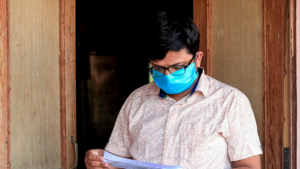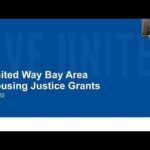Search
PAYING RENT IS STILL A CHALLENGE PART 1
August 29, 2021
Did you know that over 148,000 Bay Area residents are NOT caught up on their rent payments?
Last year, United Way Bay Area worked closely with our community partners to coordinate outreach for the 2020 census count across the eight-counties we serve within the Bay Area region (Alameda, Contra Costa, Marin, San Francisco, San Mateo, Santa Clara, Solano). Our programs and partners who deliver daily services like Earn It! Keep it! Save It!, 211, and SparkPoint, aided the state in reaching some of the hardest to count communities (young people, low-income families, people experiencing homelessness, renters and shared housing, and non-English speakers), prioritizing an accurate count which would then inform funding streams and policies in the Bay Area. In the face of a pandemic, our vast network of individual, nonprofit, business, and government partners in the region came together to support the state’s efforts to invest in community intentionally, equitably, and efficiently.
As the pandemic unfolded, and residents faced increased economic and housing insecurity, the value of real-time data became increasingly clear. In addition to the 2020 census count, UWBA monitored the Household Pulse Survey data to determine how families fare with housing in the midst of a pandemic. This information is crucial in aiding our programs and advocacy efforts to push for an extension of the eviction moratorium while continuing to fight for stronger solutions. With roughly 48% of residents fearing eviction, and 83% of those fearing eviction experiencing a loss of income, the need for a solution beyond AB832 is hard to ignore.
Here’s a look at the numbers from June 23 to July 5 2020:
Paying rent
PAST: While a majority of residents surveyed in the San Francisco-Oakland-Berkeley metro area did report that they had paid last month’s rent, 148,719 residents reported they are NOT caught up on rent. To put this into context, 148,719 residents is roughly the size of the city of Sunnyvale.
FUTURE: When looking to the future, 247,129 residents reported slight or no confidence in being able to pay next month’s rent. To put this into context, 247,129 residents is slightly larger than the entire city of Fremont, CA.
WHY THIS MATTERS: California’s high rental prices—especially in the Bay Area— exacerbate housing insecurity and debt accrual. The average rent debt in the Bay Area is $4,351 per household across the eight-county region. These monthly debt accruals, that could add up to thousands of dollars, jeopardize the foundation stable housing provides—threatening communities’ health and economic well-being. For example, renters who fall behind on court judgements may face garnished wages, suspended licenses, or damaged credit scores which could impact job procurement, further debilitating renters who are already overwhelmed by financial burden. High rental prices and looming debt forces families to choose between staying housed or meeting basic needs.
WHAT WE CAN DO: We can continue working together to prioritize the protection, production, and preservation of housing. The need for housing is a statewide issue, and one that is hard to ignore in the Bay Area where living costs and earnings are awry. We look forward to engaging our community members, trusted partners, coalitions, and policymakers to extend renter protections, reform restrictive zoning laws, ensure all community members can live in opportunity-rich neighborhoods, and explore innovative solutions that would increase access to affordable housing.
Learn more about how reforming single-family zoning is crucial to creating inclusive communities. Take action with San Jose Neighborhoods for All to encourage the City of San Jose to create more inclusive policies that could increase access to affordable homeownership.
The road to stable, secure housing will require all of us to come together from all sectors. Our communities deserve to think beyond survival. With access to healthy, stable, and affordable housing, we can help our communities thrive across the region.
Special note: This is the first part of a three-part blog series. Stay tuned for the release of part two and three scheduled to be released in the next two weeks.



